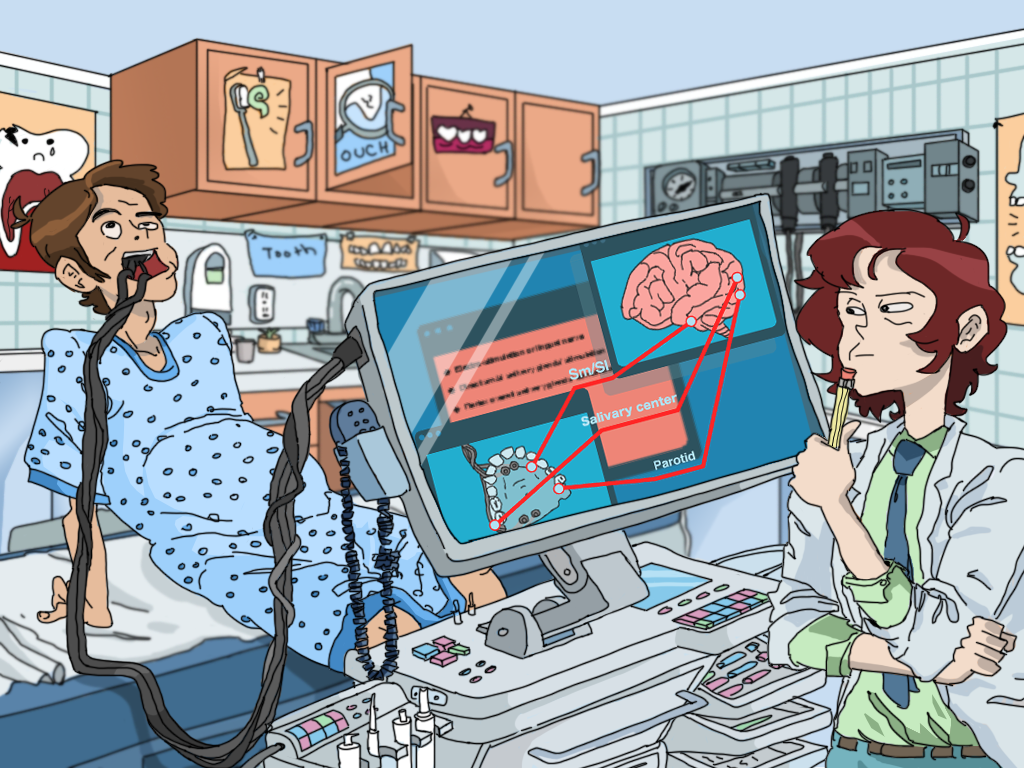Oral exams: How much electricity do our mouths need to work correctly?

Ryan Farrell, Research Communications
Even the mundane act of swallowing requires a well-coordinated dance of more than 30 muscles of the mouth. The loss of function of even one of these, due to disease or injury, can be extremely debilitating. For these people, nerve stimulation offers a ray of hope to regain some of their lost oral function.
In a new study, researchers at Texas A&M University have delineated the minimum size of electrical currents needed to provide sensation in different parts of the mouth.
The researchers said their study is a first but vital step toward building electrical stimulation implants that can restore essential intraoral functions that are lost due to nerve or brain damage.
The results of the study are published in the journal Institute of Electric and Electronics Engineers’ Transactions on Biomedical Engineering.
Many essential bodily functions are coordinated by the nervous system via sensorimotor feedback loops. As the name suggests, these neural circuits involve the brain interpreting incoming signals from sensory nerves and then commanding the motor nerves to execute a certain movement. So, for example, sensorimotor loops play a vital role in voluntary functions, like walking or holding an object, and involuntary movements, like sneezing or blinking.
Within the mouth, also referred to as the intraoral cavity, there is a rich supply of both sensory and motor nerves. In particular, sensorimotor nerves in the soft palate and tongue coordinate several intraoral movements related to swallowing, speech and respiration. And so, damage to either the sensory or motor nerve fibers due to neurotrauma or disease can compromise these essential functions, reducing the quality of life of those afflicted.
Electrical nerve stimulation might help jumpstart the nerves into action, much like how a pacemaker can electrically stimulate nerves in the heart, causing the heart muscle to contract. But unlike a pacemaker, the details on the frequency and amplitude of the electrical currents needed for proper stimulation of different parts of the mouth have not been investigated.
“Electrical stimulation can modulate nerve currents or action potentials, which are the mode of communication to and from the brain,” said Hangue Park, assistant professor in the Department of Electrical and Computer Engineering. “And so, electrical stimulation should be carefully applied, because if not, then it might cause undesirable effects, or it might not stimulate anything at all.”

